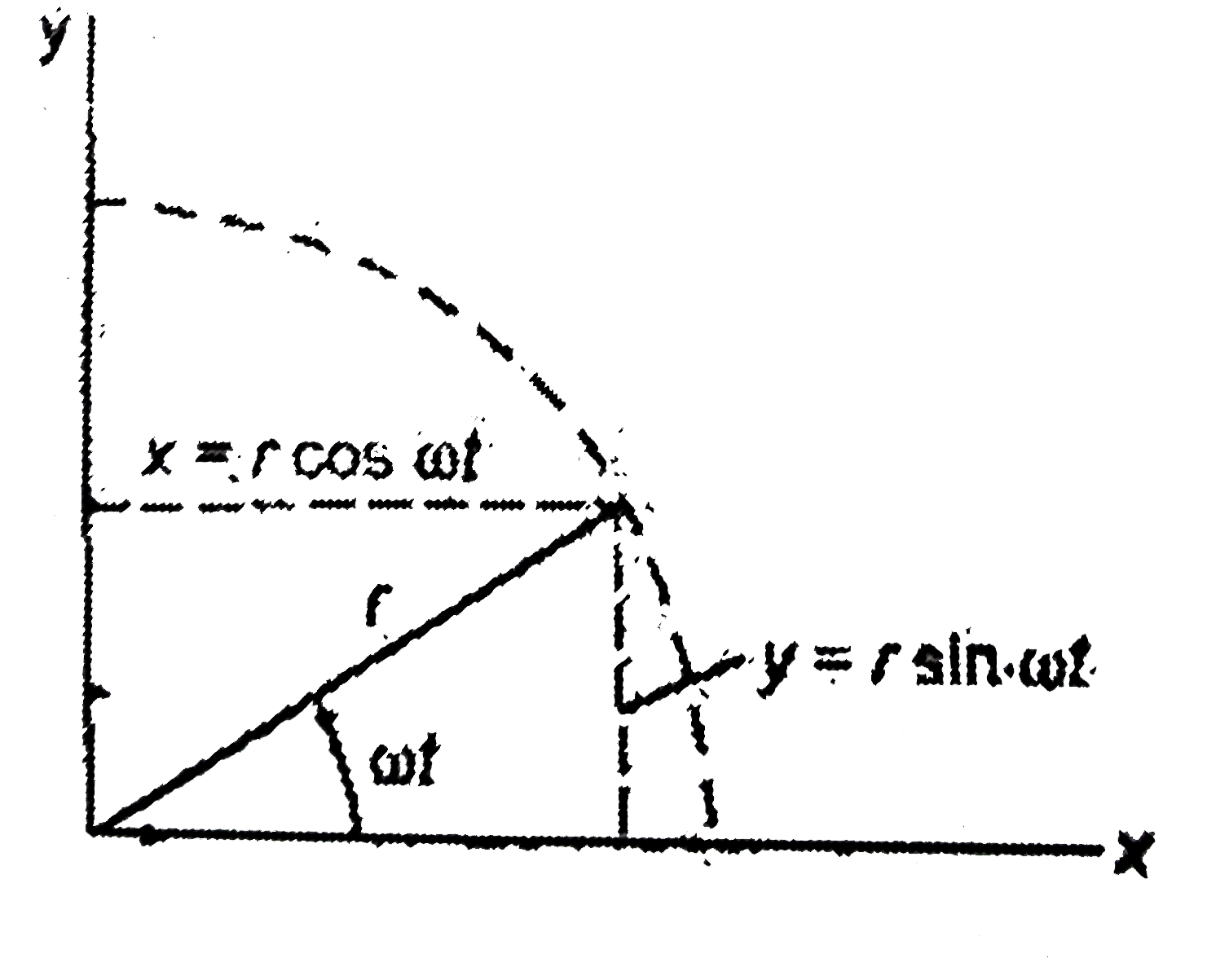The position vector of a particle is →r=acosωti+asinωtj, the velocity of the particle is
directed towards the origin
directed away from the origin
parallel to the position vector
perpendicular to the position vector
The correct Answer is:D
→r=(acosωt)ˆi+asin(ωt)ˆj
∴ Slope of the position vector =asinωtacosωt=tanωt and velocity
v=drdt=−(aωsinωt)ˆi+(aωcosωt)ˆj
∴ Slope of the velocity vector
=−aωcosωtaωsinωt=−cotωt=−1tanωt
Thus (tanωt)×(−1tanωt)=−1
Thus the velocity vector is perpendicular to the position vector.
Topper's Solved these Questions
- VECTORSBOOK - MARVEL PUBLICATIONCHAPTER - VECTORSEXERCISE - MULTIPLE CHOICE QUESTIONS (STANDARD LEVEL)
84 Videos
- VECTORSBOOK - MARVEL PUBLICATIONCHAPTER - VECTORSEXERCISE - TEST YOUR GRASP
10 Videos
- REFRACTION OF LIGHT BOOK - MARVEL PUBLICATIONCHAPTER - REFRACTION OF LIGHT EXERCISE - Test Your Grasp
10 Videos
Similar Questions
The position vector of a particle is given by →r=kcosωˆi+ksinωˆj=xˆi+yˆj, where k and ω are constants and t time. Find the angle between the position vector and the velocity vector. Also determine the trajectory of the particle.
View SolutionA particle move so that its position verctor varies with time as →r=Acosωtˆi+Asinωtˆj. Find the
a. initial velocity of the particle,
b. angle between the position vector and velocity of the particle at any time, and
c. speed at any instant.
View Solution
Knowledge Check
The position vector of a particle is r=asinωtˆi+acosωtˆj
The velocity of the particle isAparallel to position vecorBperpendicular to position vectorCdirected towards originDdirected awa from the originThe motion of a particle is given by
y=asinωt+bsinωt
The motion of the particle isAnot a S.H.M.BS.H.M. with amplitude (a + b)CS.H.M. with amplitude (a+b)/2,DS.H.M with amplitude √a2+b2The motion of a particle is given by x=Asinωt+Bosωt. The motion of the particle is
Anot simple harmonicBsimple harmonic with amplitude A+BCsimple harmonic with amplitude (A+B2)Dsimple harmonic with amplitude √A2+B2
The motion of a particle is given by x=Asinωt+Bcosωt. The motion of the particle is
View SolutionPosition of a particle varies as y=cos2ωt−sin2ωt. It is
View SolutionConsider a particle moving in the x−y plane according to r=r(cosωtˆi+sinωtˆj), where r and ω are constants. Find the trajectory, the velocity, and the acceleration.

View SolutionA particle moves so that its position vector varies with time as →r=Acosωtˆi+Asinωthai(j). The initial velocity of the particel the particle is
View SolutionThe position vector of a particle is →r=(3ˆi+4ˆj) metre and its angular velocity →ω=(ˆj+2ˆk)rads−1 then its linear velocity is ( in ms−1)
View Solution
